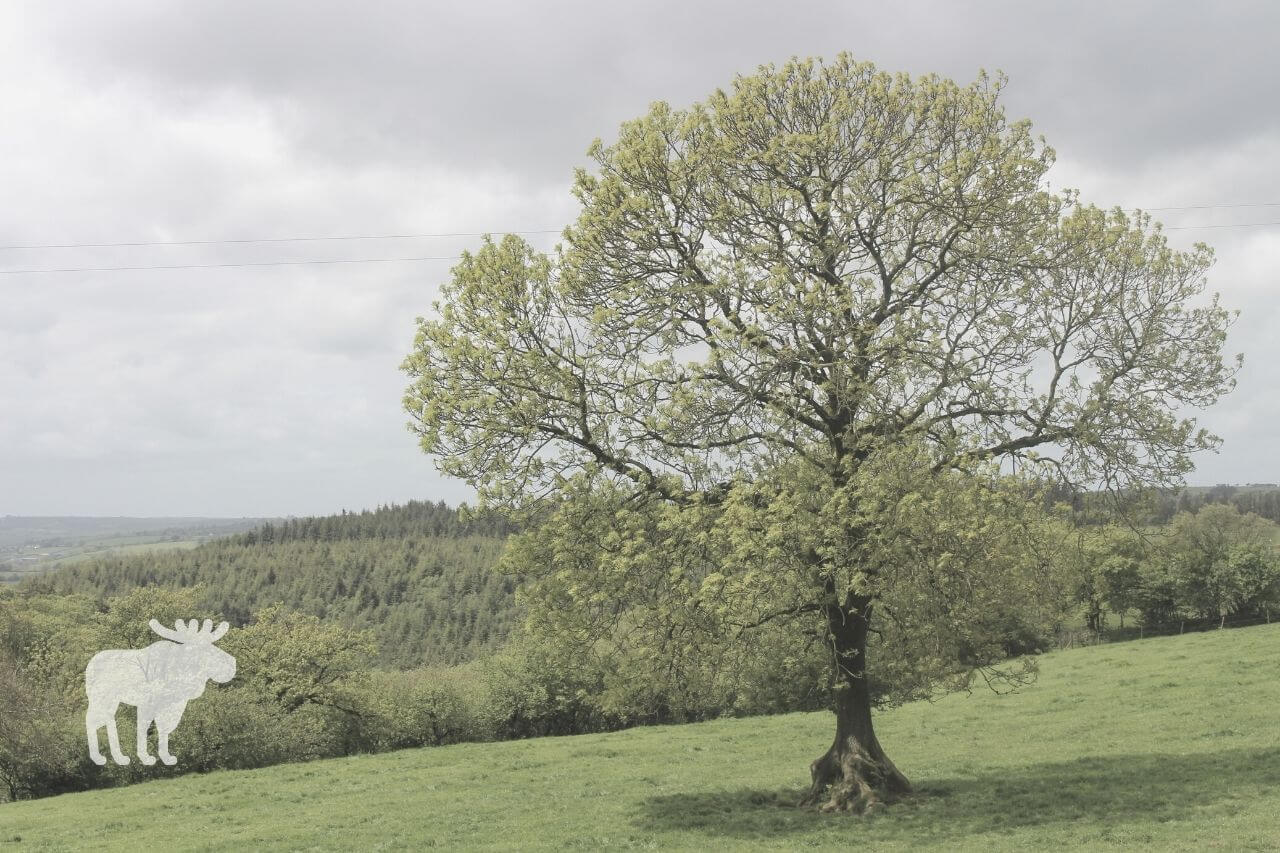Some trees can be quite difficult to tell apart if you don’t look too closely. Ash trees and elm trees are two such species. On first glance, you may think they are the same type of tree. So, what sets them apart from each other? What are their similarities and differences? In this article, we’ll answer these questions as we compare the ash tree vs. the elm tree.
What You'll Learn Today
What is an Ash Tree?

Ash trees are widely distributed around the Northern Hemisphere. There are many different species of ash that can be found throughout the world.
Ash trees are known for having diamond-shaped furrows or soft, scaly plates in their bark, as well as oppositely-arranged compound leaves. They produce single-winged fruits which are released from the trees and blow in the wind each summer.
Physical characteristics differ somewhat between the different species of ash. For example, the green ash produces smaller, narrower fruits than the white ash and is only about half as tall and wide.
Ash trees can range in height from 30 to 80 feet and may have trunks from 1 to 4 feet in diameter depending on species. The white ash is generally the largest species, growing 60 to 80 feet tall on average.
All ash trees have compound leaves made up of oppositely-arranged leaflets. The leaves are generally a light yellow-green color.
Ash trees grow best in loose, well-draining soil, and they need plentiful amounts of both water and sunlight. It is not uncommon to find several of them growing together.
In some areas, ash trees have been nearly wiped out by emerald ash borers. These insects bore into the wood of the tree, slowly killing them from the inside out.
Check out this video to learn to identify an ash tree.
What is an Elm Tree?
Elm trees are also found widely throughout the Northern Hemisphere. Like ash, there are many different species of elm, and they have slightly different physical characteristics depending on the species.
Elm trees generally have brownish-gray, diamond-furrowed bark, similar to some ash trees. However, elm leaves are generally a darker green, have a more deeply-veined, toothlike appearance, and are alternately arranged on the branches.
In terms of height, ash trees vary widely from species to species. Some species, such as the slippery elm and English elm, can grow more than 130 feet tall; other species have a more midrange height of 20 to 80 feet, while the camperdown elm only grows about 10 to 15 feet tall.
Elm trees technically don’t have compound leaves, though their leaves are often arranged on the branch to appear that they are large leaflets making up large compound leaves. They are alternately rather than oppositely arranged, and the leaves often appear to have a large chunk taken out of them, as shown in the video below.
Elm trees also grow well in loose, well-draining soil, and they need plenty of water, but they require full sunlight to really thrive. For this reason, they frequently grow more isolated rather than in stands of trees.
Elm trees are frequently targeted by Dutch elm disease, a fungus spread to and between the trees by bark beetles.
Ash Tree Vs. Elm Tree: Similarities and Differences

As you can probably tell from the above sections, ash and elm trees have some obvious similarities. That said, you may have noticed a few differences as well.
Let’s take a closer look at these similarities and differences.
Similarities
- Distribution and habitat: Both ash and elm are found all over the Northern Hemisphere, throughout North America, Europe, and parts of Asia. They are often found growing in the same habitats, as they require similar growing conditions.
- Overall appearance: From a distance, ash and elm trees can look quite similar. They both have the same beautifully-patterned brown-gray bark and a similar-looking leaf pattern.
- Susceptibility: Both ash and elm are susceptible to disease and pests, though they are most often targeted by different threats. As noted above, emerald ash borers pose the greatest threat to ash trees, while bark beetles spreading Dutch elm disease are the biggest risk for elms.
- Species diversity: Both ashes and elms come in a variety of different species, ranging in size and physical attributes.
Differences
- Scientific families: Despite their similarity of appearance, ash and elm trees belong to different scientific families. Ash trees belong to the family Oleaceae and the genus Fraxinus, while elm trees are in the family Ulmaceae and are denoted by the genus Ulmus.
- Leaves: The most notable physical difference between ash and elm trees is their leaves. Ash trees have oppositely-arranged leaflets making up compound leaves, while elm trees have simple leaves arranged alternately on the branches.
- Size: Both ash and elm trees come in different sizes depending on species, but elm trees tend to vary in size more than ash trees do. Some elm trees are much smaller than ash trees, while many are much larger.
- Sunlight requirements: Though they generally have the same growing conditions, ash and elm differ in their need for sunlight. Elm trees require full sunlight, while ash trees can thrive in partial shade.
Conclusion
Ash trees and elm trees are easy to confuse because, at first glance, they look quite similar; they also frequently grow in the same areas. That said, if you look a little closer, you will start to notice differences between them, especially in the arrangement of their leaves.
Is it the Elm Tree that loses keys in fall?
Thank you for posting this article. We live on 2.1 acres in Poteau Oklahoma. We have several spieces of trees on our property. Google search has helped us identify some different trees. Three species of Hickories along with some Post Oaks and one American Elm. Someone a bit ago told us the Elm was an Ash, but not so.
Thank you again for posting your article.